Cold smoking temperatures for food like salmon, bacon, or cheese vary.
When we talk about temperature, we must also address aspects of airflow and humidity. From my 20 years of experience, these are all highly relevant for cold-smoking food.
For my first ten years of cold-smoking meat and other foods. I wasn’t aware of how important it was. When I was being taught by Dutch or German butchers, not all the aspects of the craft were covered.
Cold smoking, for some reason, is a bit of a mystery for many, but as long as you follow the process like any type of curing, it’s straightforward.
I want to help you discover what a fulfilling craft it is and how it relates to charcuterie and other cold-smoked foods.
I have cold-smoked everything from dairy cream to many different types of fish, vegetables, and meat (farmed and wild), some of which I have harvested from the wild.
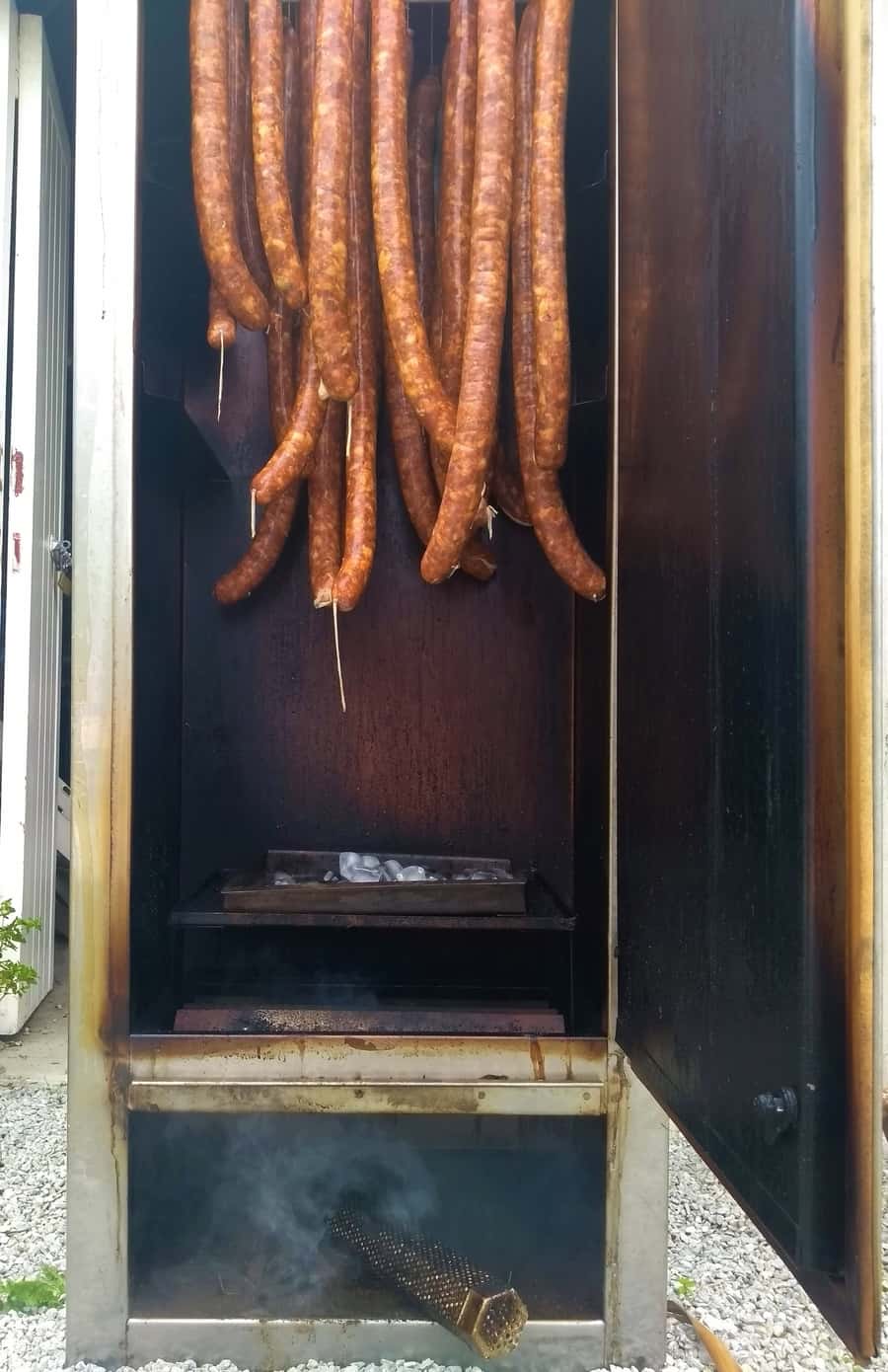
Being a man of science, I needed to dig deep into the parameters and factors that change the cold-smoking process. Many commercial smoking textbooks later, I am comfortable and always like experimenting while following the primary process.
But then you realize that cold-smoking meat is just another form of drying meat out to intensify flavor by losing moisture, and historically for preservation.
Cold smoking (link to cold smoking article category list on this site) was traditionally used to create antibacterial and antifungal protection to make preserving more effective.
Temperature Table and Guides for Cold Smoking Food
Temperature Guidelines for Cold Smoking:
- Temperature Range: 68°F to 85°F (20°C to 29°C)
- Optimal Temperature: Around 70°F (21°C) for most foods
- Relative Humidity: 60-70% to prevent food from drying out
- Smoking Time: Varies depending on the type of food and desired flavor intensity. It can range from a few hours to several days.
| Food Type | Temperature | Smoking Time | Wood |
|---|---|---|---|
| Cheese | 50-60°F/10-15°C | 1 to 4 hours | Fruitwood, Lighter flavor wood like apple |
| Raw Whole Eggs | 50-60°F/10-15°C | 5-20 hours (over x3 sessions) | light to medium smoking woods |
| Dairy – milk, cream | 50-60°F/10-15°C | 1-3 hours | light to medium smoking woods |
| Fish | 41-70°F/5-21°C | 3 to 12 hours, depending on thickness | Fruitwood or lighter flavored smoking wood |
| Meats (bacon, ham, sausages) | 41-70°F/5-21°C | 3 to 20 hours | Hardwood chips (e.g., oak, hickory, mesquite) |
| Poultry (e.g., chicken, turkey) | 41-70°F/5-21°C | 1 to 6 hours, depending on size and desired smokiness | Fruitwood or hardwood chips (e.g., apple, cherry, hickory) |
| Vegetables (e.g., tomatoes, peppers, eggplant) | 41-70°F/5-21°C | 1 to 2 hours | Fruitwood or hardwood chips (e.g., apple, cherry, hickory) |
10-20°C or 50-70°F is a cold smoking temperature suitable for meat, seafood, or dairy. Over 30°C/86°F meat begins to cook; other factors such as airflow and humidity should be considered.
I first actually read all about these factors in a 1970s book from the library, which is a man’s experience of at-home & commercial hot & cold smoking.
Humidity and airflow are often mentioned. Because both of these are so important, I wanted to discuss them below.
I mention this in my cold smoking guide, but I want to elaborate again.
Quicks Tips on Cold Smoking Food
Tips for Cold Smoking:
- Use a Cold Smoke Generator: A cold smoke generator, like a maze or tube smoker, helps maintain consistent, low-temperature smoke.
- Keep Food Away from Direct Heat: To prevent cooking, ensure the food is positioned away from the heat source. If possible, use a separate chamber for smoke generation.
- Monitor Temperature: Use a reliable thermometer to monitor the smoking chamber’s temperature. Avoid temperatures above 85°F (29°C), ideally below 70°F/21°C.
- Control Airflow: Adjust the airflow to regulate the intensity of the smoke. More airflow can result in a milder flavor, preferred over too much smoke, making food bitter.
- Dry Food Before Smoking: Pat dry or air-dry food before cold smoking to help the smoke adhere better and improve the flavor (pellicle formation on meat).
- Rotate or Hang: Rotate food occasionally, even when smoking, or hang it to expose all areas of food to smoke vapor.
- Experiment: The smoking time and wood type can vary depending on personal preference, so feel free to experiment to find your desired flavor profile
Here is a video on cold smoking, various setups, and tips I made.
Drying the Meat & Cold Smoking Helps
Cold smoking, by definition, involves drying the meat out with beneficial cold smoke. This is because you use hardwood wood, which generally loses its leaves in winter.
It has the right properties from the smoke to inhibit unwanted bacterial growth and keep away flies and other pests.
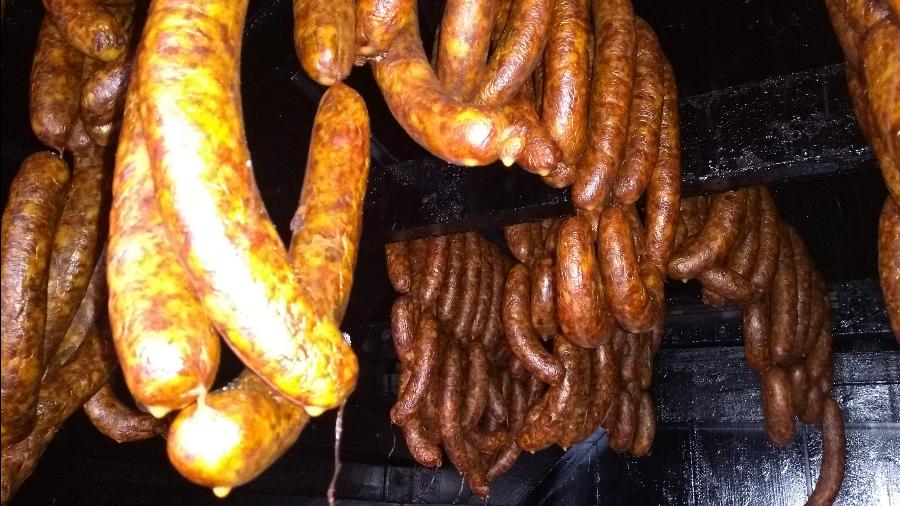
Dry Curing and Cold Smoking are Similar
For myself and so many people I talk to about curing and smoking, especially cold smoking. You’re just drying the meat with smoke at a temperature that won’t cook the meat at all, which minimizes the chance of unwanted bacteria growing because of the low temperature.
Hopefully, this can be insightful also.
How Temperature, Humidity & Airflow -Interaction
The interaction between the humidity airflow and the temperature is essential – often not mentioned.
My local climate is high humidity and lower temperatures at night (which is the case in many parts of the world with moderate temperatures). You want over 60-70% humidity, just like a curing chamber or the area where you are drying meat.
I have some photos of my first basic cold smoker (here are other DIY cold smoker ideas I put together) which was quite a sight, using an old kettle grill and placing a pellet tube underneath it.
I could open up the top vent on the kettle or offset that lid slightly.
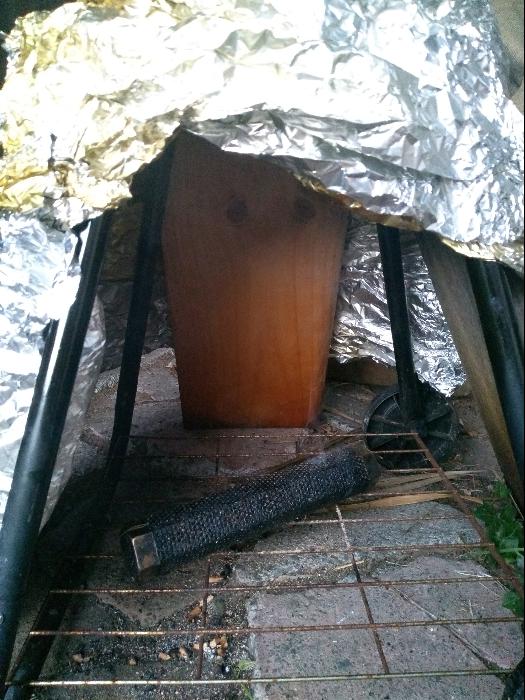
But it does depend on where you live. If you’re in an arid desert environment, then quite often, you work around 20-30% humidity. Nighttime may be suited if the temperature drops to a desired level.
A quick tip: if the temperature is slightly too high, place water in a bowl inside the smoking area, which can increase the humidity substantially and cool it down. A bit of moisture testing with a Hygrometer like this makes sense.
Cold Smoking Meat vs. Vegetables vs. Dairy
Here is a picture of some cold smoking I did. It was raining then, but the recipes I was following said that all these bits and pieces shouldn’t be smoked for longer than an hour to impart flavor (cream and salt only 20-30 minutes).
In this cold smoking session, there was salt, cream, beetroot, mushroom, eggplant, and wild duck at a temperature of 60°F, with overcast conditions, the humidity was approximately 75%.
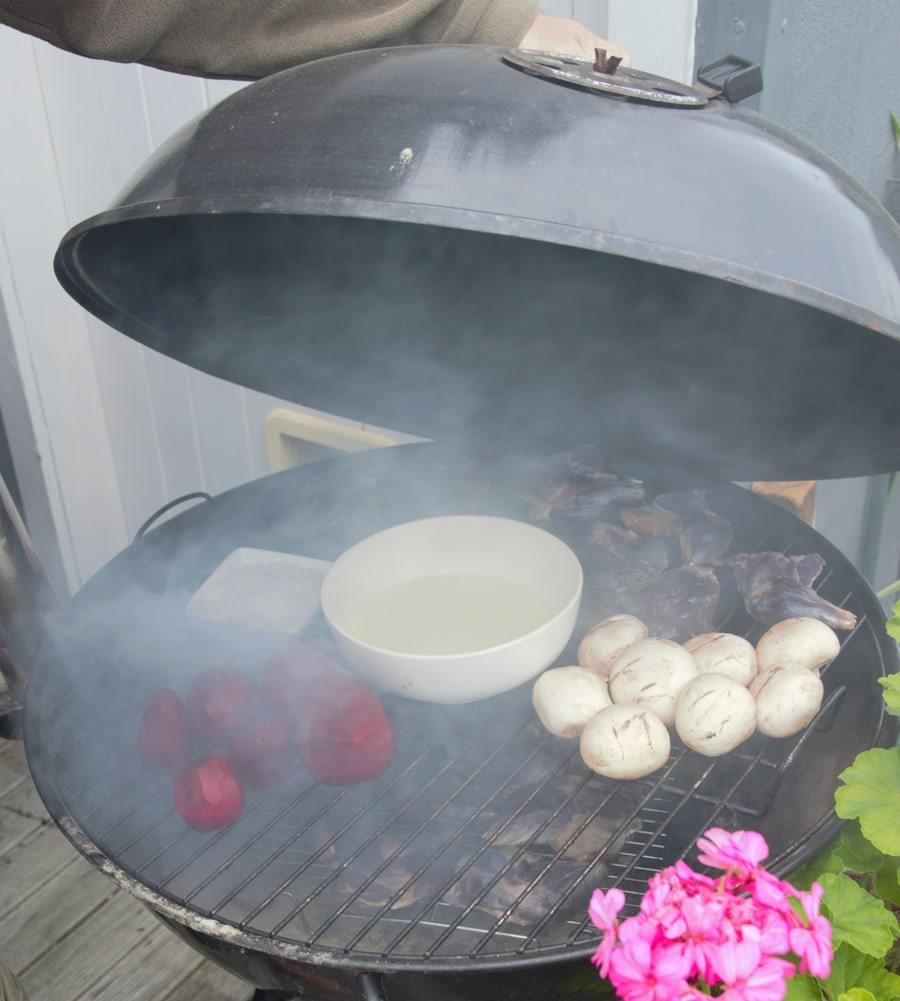
From all the cold smoking I’ve done, my favorites have been eggplant and beetroot.
I did create a rather fantastic potato gratin using the cold smoked cream.
Most dairy-type products like cream or cheese I’ve found do not lead to prolonged cold smoking sessions. Like any cold smoking (here, I wrote about different cold smokers you could use), you always want to put your food in a container and wait for the flavor to develop further.
I like lighter woods, like fruit woods or grapevine. Applewood is very easy to acquire locally and a go-to for me. It’s a nice light, smoky flavor.
I prefer to use heavy woods like mahogany on meat or mix them with lighter wood. I did a simple breakdown from my perspective on woods for smoking, check that out over here.
Essential Factors for Cold Smoking
Here are some things that cover a lot of cold smoking, even though it’s a simple process once you start cold smoking.
If your looking for the 'ducks nuts' (that means a very good bit of equipment). A smoke generator can be used as a cold smoker, or adding smoke to indirect cooking which equates to a form of 'low & slow' bbq or making smoked ham and some much more.
The inventor of smoke generators was Smokai, it's a simple device that uses the venturi effect and a variable air pump to control the amount of smoke you are pumping.
I have a range of cold smoking options, and the Smokai is my favorite.
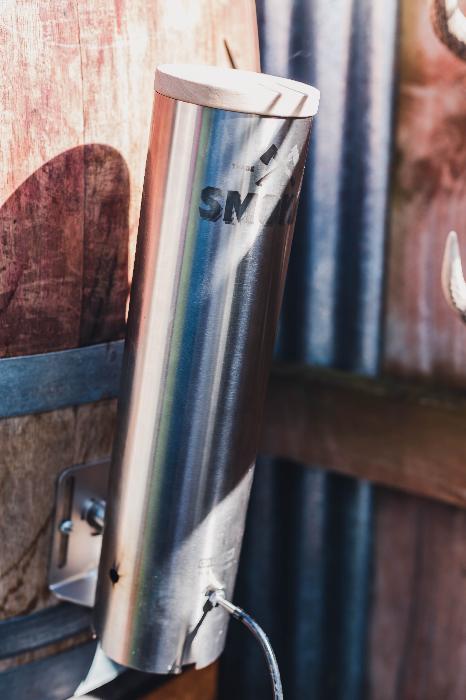
By far the smokai is the most efficient cold smoker I've come across because you have control.
It also burns very clean, which flavors the food exceptionally well. I've been using smoke generators for over 10 years, and this one is the ducks nuts.
Check out this review I did of the Smokai Smoke Generator here.
For further details, here is a cold smoking overview video I created.

Tom Mueller
For decades, immersed in studying, working, learning, and teaching the craft of meat curing, sharing the passion and showcasing the world of charcuterie and smoked meat. Read More
